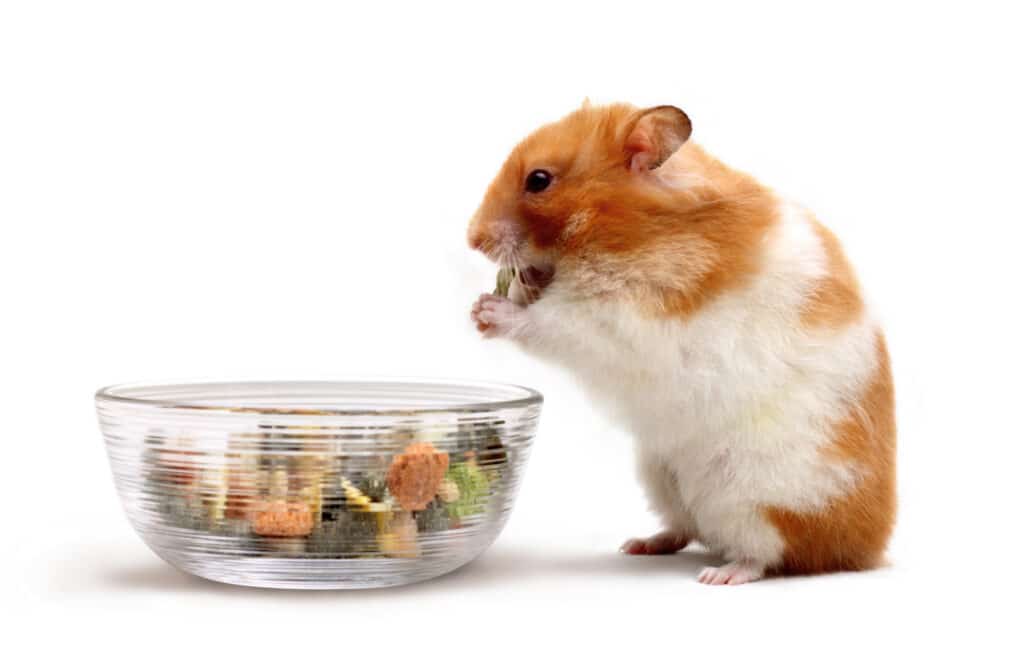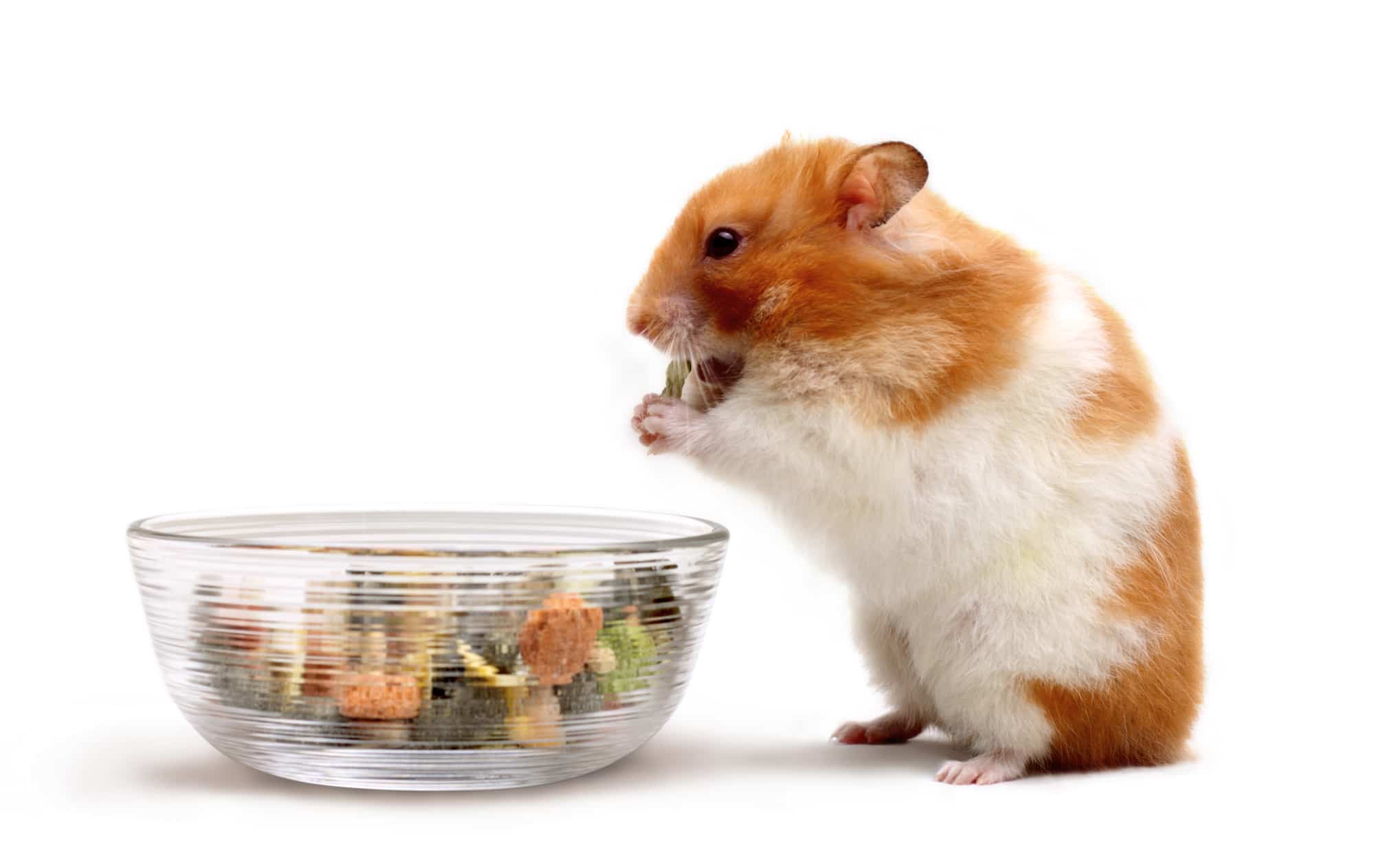Hamsters are tiny animals. Their small digestive systems cannot handle all the food items we eat. So, some human food items that are perfectly safe for humans can be deadly for hamsters. If you’re a hamster owner, you should know which foods are not safe for your hamster so you can avoid giving them to him. But if you don’t know which food items are safe for your hamster and which aren’t, you don’t have to worry. In this blog post, I will list all the common food items that hamsters should not eat.
What Can Hamsters not eat?
Fruits
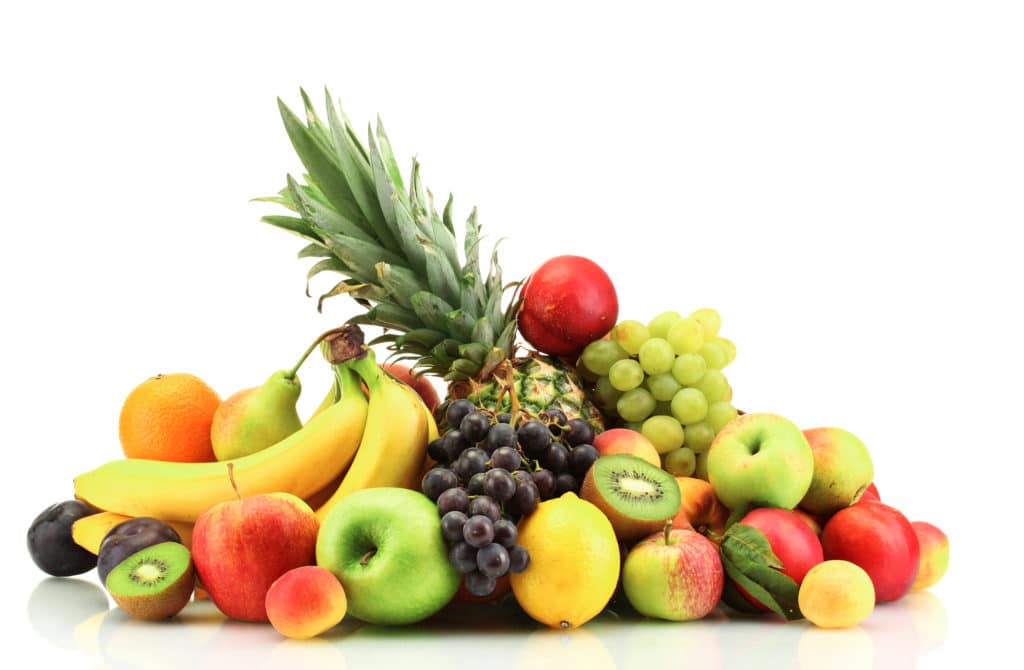
1. Citrus fruits
Citrus fruits like orange, grapefruit, etc., contain a good amount of Vitamin C, which is important for the growth, development, and repair of the tissues in the body. So, you may think it is okay to give your hamster oranges. But citrus fruits like oranges are highly acidic since they contain citric acid.
Even though our bodies can handle the amount of citric acid in oranges, a hamster’s digestive system cannot handle that. These fruits are too acidic for them. When consumed, hamsters can suffer from digestive issues, diarrhea, and other stomach-related issues. And since diarrhea can quickly escalate to Wet Tail in hamsters, which can be life-threatening, you should avoid giving citrus fruits to your hamster.
2. Avocado
Avocado is a great source of healthy fats, antioxidants, and some important vitamins and minerals. But 77% of its calories come from fat. So, it is a high-calorie, high-fat food. Therefore, it can make your hamster obese. Avocado also contains a lot of dietary fiber. So, it can cause digestive problems and diarrhea. So, never give avocado to your hamster.
3. Pomegranate
Like other fruits, pomegranate also contains a lot of beneficial plant compounds, like antioxidants and phenols, which can help prevent cancer, reduce inflammation, and keep your hamster’s heart healthy. Pomegranate is also found to improve urinary health by preventing the formation of kidney stones (Source: Healthline). Pomegranate is also found to be effective in combating harmful microorganisms, especially in the oral cavity. It can also improve exercise endurance, the time a person can perform an exercise before getting tired. It also promotes digestive health by promoting the growth of good gut bacteria.
But despite all its health benefits, pomegranate has a high sugar content as well. As hamsters are prone to diabetes, it is recommended not to give any pomegranate to your hamster. Moreover, pomegranate can also cause allergies and digestive problems in hamsters and lower their blood pressure (Source: Pet Diet Guide). So, it is better not to give any pomegranates to your hamster.
4. Dates
Dates are a great source of energy as well as essential minerals like iron. However, they are also high in sugar. So they can cause obesity and diabetes. Moreover, they are sticky. Hence, they can cause your hamster to choke. So, don’t give dates to your hamster.
Vegetables
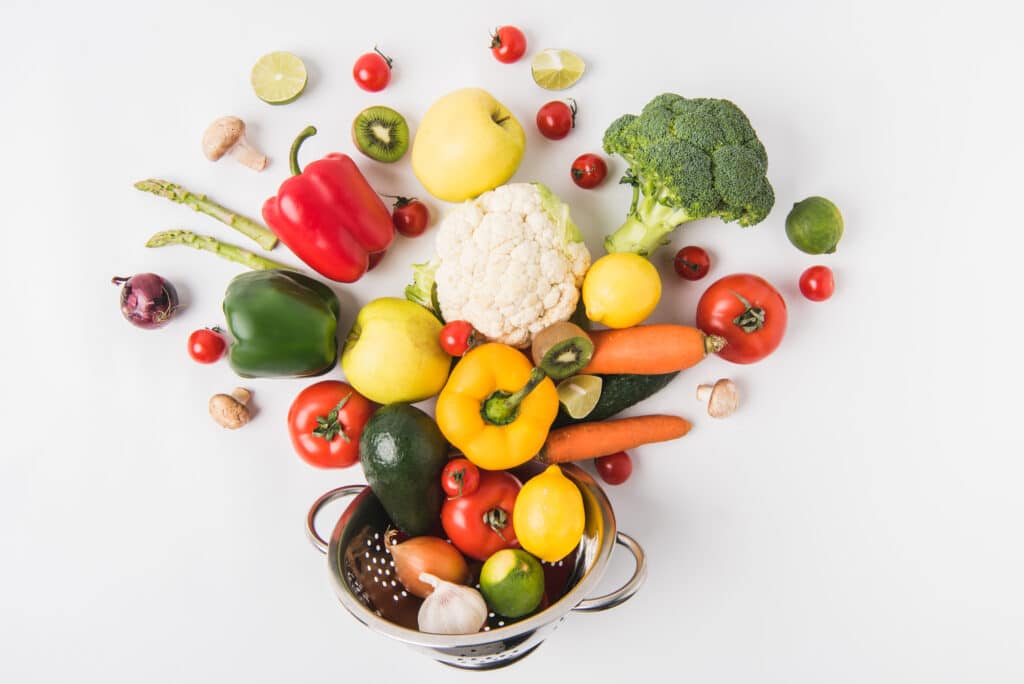
1. Garlic
Garlic contains a large amount of calcium, phosphorous, and acids (Source: Hamster Pros). Since hamsters have delicate digestive systems, a large amount of calcium and phosphorous can upset their stomach and cause digestion problems. Their blood pressure can also drop significantly (Source: Tiny Pet Tales). Calcium, when consumed in excess, can result in the formation of stones in the gall bladder.
In addition to that, it contains organosulfoxides, which get converted to thiosulfates in the body (Source: Pet Diet Guide). Thiosulfates are the reason for the strong smell of garlic and other plants like onions, leeks, and chives. Once thiosulfates are produced, they enter the bloodstream from the small intestine. Then, they can cause gastrointestinal and respiratory tract irritation.
Garlic contains a compound called allicin, which can damage the red blood cells of your hamster, resulting in anemia.
When consumed in small quantities, garlic can irritate your hamster’s mouth, stomach, and small intestine and make his breath smell bad. When consumed in large quantities, it can lead to bigger problems like anemia, liver and kidney damage, weakening of the immune system, and in extreme cases, even death.
Therefore, you should never give garlic to your hamster. If your hamster has already eaten garlic and shows any symptoms of garlic poisoning, like vomiting, diarrhea, and loss of weight, you should take him to a vet immediately.
2. Onions
Onions, like garlic, chives, and leeks, belong to the Allium plant family. So, they contain chemical compounds called sulfoxides, which are dangerous for animals (Source: Pet Diet Guide). Moreover, they contain allium, which can cause diarrhea, vomiting, nausea, and in higher doses, anemia and total destruction of red blood cells. So, onions should also be avoided.
3. Chives
Like onions and garlic, chives are also highly acidic, can produce thiosulfates in the body, and contain a lot of phosphorous and calcium. So, chives should also be avoided.
4. Leek
Just like the other members of the Allium family of plants, leek also contains thiosulfates. Since this compound can lead to anemia and cause total destruction of the red blood cells of pets, leek should be avoided at all costs. If you think your hamster has eaten leek, take him to a vet asap.
5. Eggplant
Eggplant is highly acidic. So, it can upset your hamster’s stomach and cause digestive problems (Source: Pet Food Fuss). Acid can also erode the enamel in your hamster’s teeth, causing dental problems. If your hamster has teeth problems, he could also shy away from eating, causing malnutrition.
6. Iceberg lettuce
Even though lettuce can be a great addition to your hamster’s diet when fed in moderation, not all types of lettuce are created equal. Iceberg lettuce, for instance, should be avoided. It contains very little amount of vitamins and minerals. So it offers no nutritional value to your hamster. On the other hand, it contains a lot of water.
Hamsters are creatures that live in dry, arid areas. In the wild, their diet consists of grass, seeds, nuts, some grains, and occasionally, dead insects. Therefore, their bodies have evolved to survive without consuming much water.
If humans drink too much water, it might affect our kidneys’ ability to extract water. This would affect the amount of water in our bodies, reducing the levels of electrolytes like sodium and causing the body cells to swell in size. This condition is called Hyponatremia (Source: Mayo Clinic).
A human being has to drink a lot of water for this condition to occur. But since a hamster is relatively smaller and has evolved to survive in areas with very little water, this condition could occur just by eating a vegetable with high water content, like Iceberg lettuce. Hyponatremia could also lead to diarrhea. As you already know, diarrhea can complicate and lead to Wet Tail in hamsters, which is a life-threatening condition.
So, avoid Iceberg lettuce. But you can give your hamster a small amount of the leafy part of other lettuces, like Romaine lettuce, occasionally.
7. Raw beans
Beans are a great source of protein and dietary fiber. So, they are healthy for humans. But they contain a compound called lectin, which can be poisonous for hamsters and can lead to gastrointestinal problems and, at times, even death. Only boiling reduces the amount of this compound in beans (Frying and roasting do not, though).
Moreover, the high fiber content of beans is also a matter of concern because they can be hard to digest. So, they can cause digestive problems. In addition to that, the high carbohydrate content of beans can also cause obesity and diabetes. Last but not least, beans also contain phytic acid that can impact the body’s ability to absorb nutrients.
So, don’t give raw beans, especially raw kidney beans, to your hamster (Source: Pet Diet Guide).
8. Raw Potatoes
Potatoes are a good source of Vitamin C, B3, and phosphorous. They are also a good source of energy since they contain a considerable amount of carbohydrates. So, boiled, roasted, and baked potatoes can be given as an occasional treat for hamsters. But raw potatoes should absolutely be avoided because they contain a toxin called solanine that is deadly to most mammals, including humans (Source: Petkeen). So, hamsters should not be fed raw potatoes.
9. Green tomatoes
Green tomatoes contain a compound called solanine that can upset the stomach of hamsters, causing stomach pain, bloating, and diarrhea.
Nuts & Seeds

1. Apple seeds
Apple seeds contain small amounts of a compound called amygdalin. Amygdalin can react with stomach enzymes and release a poisonous substance called hydrogen cyanide in the gut. Hydrogen cyanide can cause stomach aches, illness, and even death.
But even though hydrogen cyanide is poisonous and can kill us, the amount present in an apple seed is not enough to kill humans. So, we should be fine if we consume a few apple seeds at a time. However, for hamsters, it is a different story. Since they are such tiny creatures, even a single apple seed can be dangerous.
2. Pear seeds
Even though pear is a nutritious food for your hamster to eat, pear seeds contain amygdalin. As mentioned above, amygdalin can break down into hydrogen cyanide. So, if you’re planning to give pear to your hamster, make sure you remove the seeds first.
3. Apricot kernels
Just like the seeds of apples and pears, apricot kernels (kernel is the part of the seed that is within the seed walls), too, contain amygdalin. That is why the sale of apricot kernels is banned in several countries like New Zealand (Source: New Zealand Food Safety Organization). But baked products, like biscuits containing apricot kernels, are safe to eat because baking reduces the level of amygdalin. So, they are safe for humans to eat. But for hamsters, apricot kernels should be avoided in any form.
4. Bitter Almonds
There are two types of almonds – sweet and bitter. Sweet almonds are safe for hamsters to eat. Bitter almonds, on the other hand, contain amygdalin. So, they should never be given to hamsters.
5. Raw lentils
Raw lentils contain lectin, a type of protein plants produce to ward off animals. It can cause digestive tract problems and food poisoning leading to diarrhea and vomiting. Moreover, raw lentils can inhibit the body’s ability to absorb certain minerals. But soaking and cooking eliminate these negative effects of lentils. So, hamsters should never be fed raw lentils.
6. Chickpeas
Chickpeas are a good source of plant protein, Vitamin B9, manganese, and dietary fiber. But many pet owners advise against giving chickpeas to hamsters, mostly due to their high fiber content that can disrupt hamsters’ bowel movements (Source: Tiny Pet Tales). So, do not give chickpeas to your hamster.
Other plant parts
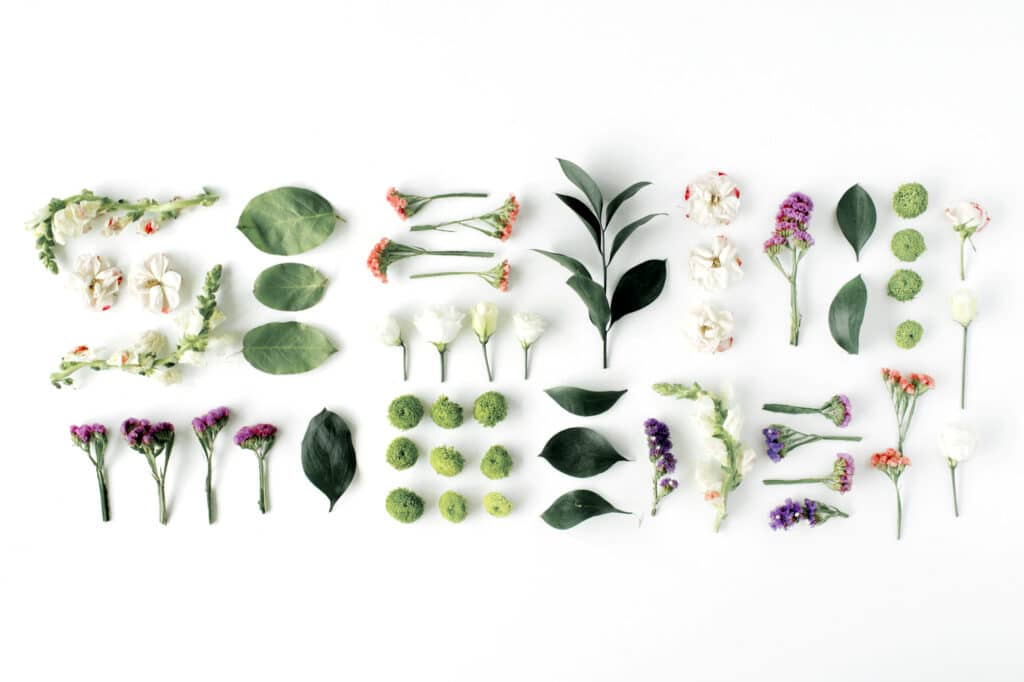
1. Aloe Vera
Aloe Vera gel is safe for hamsters to eat. Even though it tastes bitter and sour, it has healing properties (Source: PubMed). So, if your hamster has skin problems like dry, scaly, and/or itchy skin, you can apply Aloe Vera gel to relieve the problem.
The skin part of the plant, however, is toxic. It contains Saponins and anthraquinones, which can cause vomiting, diarrhea, and lethargy (Source: ASPCA Pet Health Insurance).
Moreover, Aloin, the part of the plant that exists between the outer coating and the gel-like inner part of the plant, is found to cause colorectal cancer in rats (Source: WebMD).
2. Rhubarb leaves
Rhubarb leaves contain oxalic acid, which can be dangerous for animals (Source: Kidadl). Animals that eat rhubarb leaves can show painful symptoms like vomiting, diarrhea, weakness, blood in their urine, etc. So, you should never give raw rhubarb leaves to your hamster.
3. Oregano
Oregano contains a small quantity of thymol (Source: Learn About Pet). Thymol is a chemical that can cause burns in the oral cavity and gastrointestinal system and damage the digestive system when a significant amount is consumed (Source: Santa Cruz Biotechnology). Moreover, it can cause burns on the skin and eye when your hamster comes in contact with it. When inhaled, it could also irritate the throat and lungs of your hamster.
Oregano also contains a decent amount of calcium. So, overfeeding can cause bladder stones.
So, hamsters should not be given oregano. But some hamster owners report that giving oregano to hamsters is not dangerous as long as the amount is kept very little (Source: Tiny Pet Tales).
4. Tomato leaves and stems
Though hamsters can eat tomatoes, they should never be fed tomato leaves or stems. The leaves and stem of the tomato plant contain solanine. This chemical is converted inside your hamster’s body into a toxic substance called tomatidine, which can cause bloating, stomach pain, and diarrhea.
5. Lettuce Stalk
The stalk part of lettuce (all types of lettuce) contains more water than the outer, drier leaves (Source: We’re All About Pets). Since hamsters are creatures that need very less water to survive, the high water content of lettuce stalks can cause Hyponatremia and, eventually, diarrhea.
6. Buttercups
All buttercups contain a chemical called ranunculin. When their leaves are bruised or crushed, this chemical breaks down and forms a toxin called protoanemonin which can cause blisters and rashes.
Chewing the leaves can cause blisters to form on the lips and face. Swallowing them can cause gastrointestinal irritation followed by dizziness, spasms, and paralysis (Source: Awkward Botany). So, you should never give buttercup leaves to your hamster.
7. Sunflower petals
When it comes to sunflowers (all parts of the plant except the seeds), there are wildly contrasting opinions circulating around the web. According to many reputable websites, no part of the sunflower plant is poisonous (Source: Live Strong).
But some gardening experts claim that the flowers, leaves, and stems of the sunflower plant contain a group of chemicals called sesquiterpene lactones, which can cause bad reactions when touched or ingested (Source: Black Gold).
Other experts claim that sunflower plant parts are only slightly toxic, and the toxicity of the plant increases with the amount ingested. So, eating only a small amount shouldn’t be a cause for concern (Source: College of Agricultural and Environmental Sciences, University of Georgia). But since hamsters are such tiny creatures, even a small amount can be too much for them.
So, do not give sunflower plant parts except the seeds (without the hull) to your hamster.
8. Tulips
Tulips contain alkaloid glycosides tulipalin A, tulipalin B, and tuilposide A. Even though these chemicals are found in all parts of the plant, they are most concentrated in the bulbs. They can cause severe irritation and burning.
Tulip poisoning can cause nausea, vomiting, dizziness, diarrhea, heart palpitations, weakness, and even death (Source: Pro Gardening Tips). But the symptoms of tulip poisoning depend on the amount of the plant part ingested. So, you should never give any part of the tulip plant to your hamster.
9. Lemon grass
Lemon grass has a citrus flavor with notes of ginger. It is toxic to most pets, including dogs, cats, and horses, causing stomach upset, weakness, etc. (Source: American Society for the Prevention of Cruelty to Animals).
However, the toxicity of lemon grass comes into effect only when consumed in large amounts. However, since hamsters are small creatures, feeding them even a small amount of lemongrass can be dangerous.
Moreover, its strong smell can also stress hamsters out. So, don’t give lemon grass to hamsters.
10. Lemon balm
Lemon balm has a strong citrus smell and taste. The strong smell can stress hamsters out, and the strong taste can upset their digestive systems. So, it is better not to give lemon balm to your hamster.
11. Lily
Not all types of lilies are toxic to pets. Some of them are non-toxic but can still cause sickness if eaten.
The level of toxicity depends on the type and part of the lily plant. For example, all true lilies (plants from the genus ‘Lilium’) are toxic to pets because they contain alkaloids that damage red blood cells (Source: Pure Pet Food).
Some types of lilies (Calla and Peace lilies) can release calcium oxalate crystals upon chewing, which can cause irritation, burning, and inflammation. Lily of the valley and may lily are extremely toxic and can cause gastrointestinal problems.
Even though all parts of these plants – flower petals, sepals, leaves, stems, pollen, and bulbs – are toxic, the bulb is significantly more toxic than the rest of the plant. So, never give any part of any type of lily to your hamster.
12. Eucalyptus
Eucalyptus contains a chemical called Eucalyptol which is a gastrointestinal irritant and neurotoxin. If your hamster eats any parts of the eucalyptus plant, he can suffer from gastrointestinal and neurological damage.
The symptoms of eucalyptus poisoning in pets are depression, diarrhea, loss of appetite, lethargy, slowed reflexes, vomiting, and seizures (Source: Wagwalking). So, hamsters should never consume any part of the eucalyptus plant.
13. Carolina Jasmine
Also known as Yellow Jessamine or false jasmine, this plant is not a true jasmine, or in other words, it is not a subspecies of jasmine. Hamsters should never eat Carolina jasmine flowers, leaves or stems because all parts of this plant contain toxic alkaloids.
Eating just one flower could be lethal to pets and children. Its toxins can be absorbed through the cuts in the skin as well. So, don’t get any part of this plant near your hamster. symptoms of Carolina jasmine poisoning include nausea, sweating, muscular weakness, convulsions, and respiratory failure (Source: Plantation Pet Health Center).
Animal products
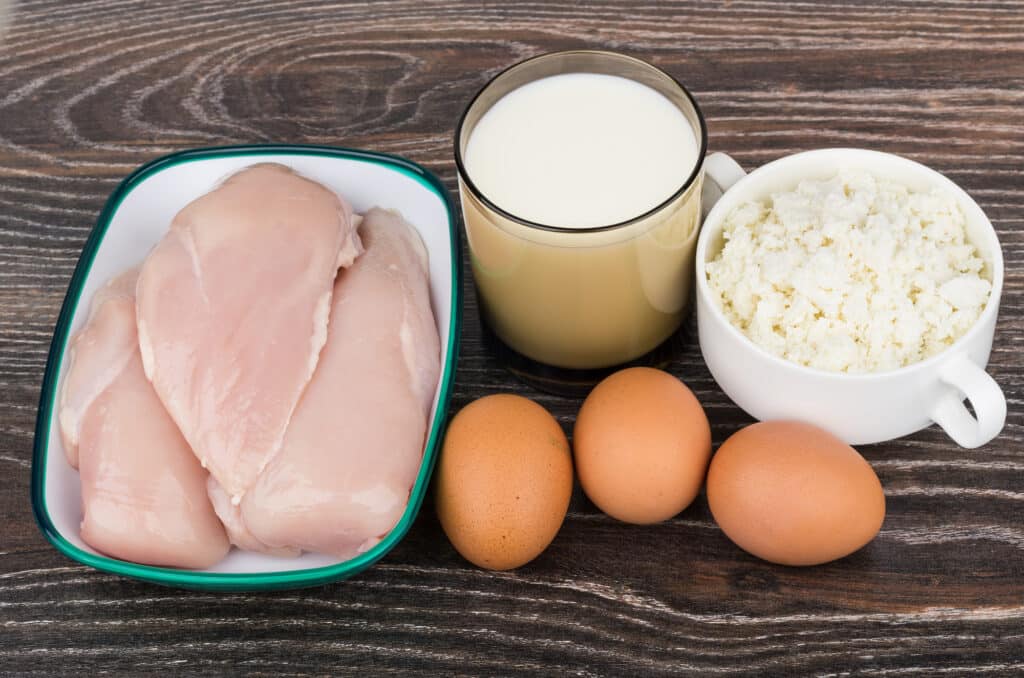
1. Milk
Hamsters are mammals. So, your intuition might tell you that nothing can go wrong if you give (cow or goat) milk to your hamster. You are correct to a certain extent. After all, hamsters are born with the ability to digest milk, i.e., their bodies contain the enzyme lactase that breaks down lactose (the sugar found in milk). However, once they wean off and become adult hamsters, the lactase level in them drops by about 90%. So, their ability to digest milk drops drastically as well. The undigested lactose is then converted into lactic acid by intestinal bacteria, which causes diarrhea (Source: Hamster Smart).
As if that’s not enough, milk contains a lot of fat as well. Whole milk contains just 3g of fat per 100ml. So, it might not seem like too much. However, 80% of milk is just water. Therefore milk contains 3g of fat per 20ml, which translates to 15g of fat per 100ml. High-fat foods are dangerous for various reasons. One of those reasons is that they can cause benign tumors in hamsters, which might become cancerous.
Milk also contains a lot of protein, which can damage the kidneys of hamsters when fed in excess (Source: PubMed). Even though kidney damage might not kill our hamsters, it could still be painful.
Therefore, due to these reasons, milk should be avoided. Even though baby hamsters can drink milk, cow’s milk is high in both fat and protein. Goat’s milk might be a better alternative for them, albeit occasionally.
But what if giving milk to a baby hamster becomes unavoidable? What should you do then?
For example, a mother hamster might abandon its babies. Even though it is rare, it is still possible. And a baby hamster cannot survive without milk from its mother. But even in such cases, you shouldn’t give cow/goat milk regularly. Instead, you should give them lactol, which is available online (Source: Tiny Pet Tales).
2. Cheese
Cheese is a high-fat, high-calorie, high-sodium diet. It can cause obesity, diabetes, and cardiovascular problems. So, you shouldn’t give too much cheese to your hamster. More than a small piece of cheese once every two weeks could be harmful.
Choosing the correct type of cheese is also important. The best option is a low-fat, low-calorie, low-sodium cheese like cottage cheese.
3. Raw eggs
Even though boiled egg whites can be a great addition to your hamster’s diet, you should never give raw eggs. Raw eggs could contain bacteria like E.Coli and Salmonella that can upset your hamster’s stomach and cause diarrhea.
4. Raw meat
Humans are omnivores. So, unlike carnivores, which have a greater ability to digest meats, our bodies are not adept at absorbing all the nutrients from raw meat. Cooking meat makes it easier for us to digest it and absorb more nutrients (Source: Forbes).
Like humans, hamsters are also omnivores. Moreover, the only meat that they eat in the wild are some dead insects, and that too, only occasionally. Their bodies have not evolved to eat larger animals like chickens. So, their digestive systems cannot digest raw meat properly. Moreover, raw meat can also contain harmful bacteria and parasites. Therefore, you should never give your hamster raw meat.
5. Red meat
Red meat, like beef and pork, is high in saturated fat. Saturated fats can increase blood cholesterol levels and put your hamster’s heart at risk (Source: American Heart Association). Moreover, some types of red meat, like bacon, ham, salami, beef jerky, etc., can contain a lot of salt and preservatives that can cause dehydration (Source: The Pet FAQ). So, avoid red meat as much as possible. If you still want to give red meat to your hamster, go for lean meat without added salt, seasonings, and preservatives, and that too, only occasionally.
6. Other pet foods
You should never give other pet foods to your hamster because they are not prepared, keeping your hamster’s health in mind.
For example, dog food typically contains more fat (and protein) content when compared to hamster food (Source: Pet Keen). So, it can lead to obesity and heart problems. Moreover, it contains less fiber. Therefore it might cause constipation in hamsters.
Similarly, cat food is also unsuitable for hamsters (Source: Pet Keen). Many manufacturers often spray a layer of fat over cat food to make it taste better. This can make your hamster obese or cause heart problems. Moreover, cat food is made mostly from animal fats and proteins because cats are carnivores. But hamsters are omnivores and hence, shouldn’t be given too much animal protein and fat because it might be too difficult for them to digest.
So, you shouldn’t give other pet foods to your hamster.
Other foods
1. Sugary and salty foods
Too much sugar can cause diabetes and obesity, whereas too much salt can increase blood pressure. So, you should avoid foods that are sugary and/or salty.
2. Chocolate
Chocolate contains two dangerous chemicals (Source: Petkeen). One of them is theobromine, and the other is caffeine. Theobromine is a chemical that is difficult for tiny animals like hamsters to digest. It can also slow down their metabolism leading to a string of problems, including obesity.
Caffeine is a chemical that can affect the nervous system of hamsters, causing stress and even death. So, you should avoid giving chocolate to hamsters.
3. Junk foods
Junk foods are unhealthy even for humans. So, you should avoid giving junk food to hamsters.
Summary
Ideally, you should give your hamster a balanced diet consisting of a wide variety of foods. For the most part, it should consist of commercially available hamster pellets. Besides that, you can give your hamster fresh foods like fresh fruits (apples, bananas, sweet potatoes, etc.) and vegetables (broccoli, cabbage, carrots, etc.), leafy greens, dry foods like fruit seeds and nuts, and animal proteins like egg whites and boiled chicken.
But while many naturally occurring food items are safe and healthy for hamsters, some of them are also deadly. In this blog post, I have provided a list of foods that can be dangerous for hamsters. Avoid giving these food items to your hamster. Instead, give other safe foods as an occasional, special treat for your hamster. It will not only keep your hamster healthy but also help tame your hamster and create a deep bond between you and him.
